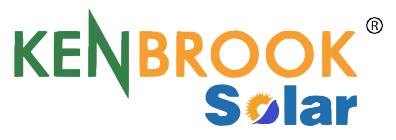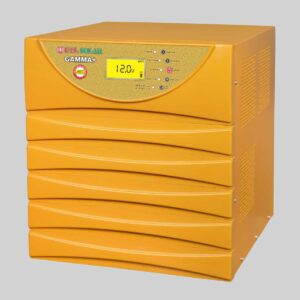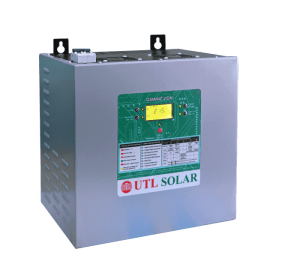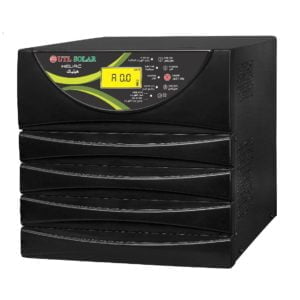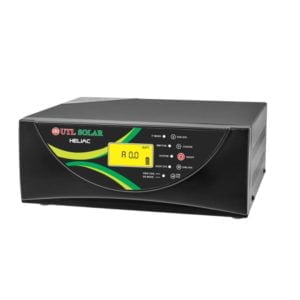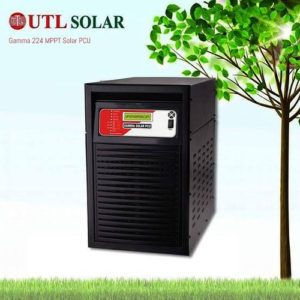Solar Inverter – Price, Types, Technology, Brand & A Complete Guide
A solar inverter is a central component of a solar systems that connects the entire system. These inverters work as the brain of a solar system, converting DC (direct current) electricity from solar panels into AC (alternative current) electricity that can be used by home appliances and other electronics.
🇮🇳 हिंदी में पढ़े:
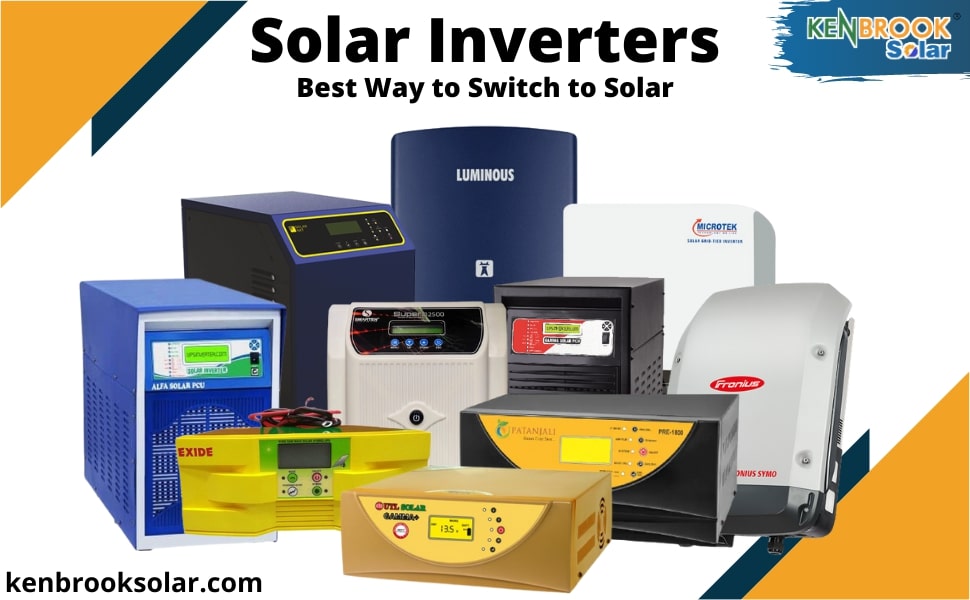
Solar inverters also know as solar power inverters and solar energy inverters. Most PV inverters on the market have peak efficiencies of more than 95%, with some reaching as high as 98%. It’s really important to choose the best inverter for your solar panels if you want to ensure peak performance. So, before making a decision, make sure you’ve done your research.
There are three types of solar inverters, each of which is available in two technologies. So, in order to select the best solar inverter, read the complete information given below.
UTL Gamma Plus 3350 rMPPT Solar Hybrid Inverter
UTL Gamma Plus rMPPT Solar Hybrid Inverter 1000VA-
UTL Gamma Plus rMPPT Solar Hybrid Inverter 2000VA-
UTL Heliac Solar Inverter 2550VA 24V 70A (Model:
UTL Heliac 1500VA/24V 50A Solar Inverter (Model: HL-2000)
UTL Heliac 1000VA/12V 50A Solar Inverter (Model: HL-1500)
UTL Gamma Solar PCU 2KVA 48V MPPT Off
UTL Gamma Solar PCU 2KVA 24V 80A MPPT
UTL Gamma+ 1kVA 24V MPPT Solar Inverter
UTL Gamma Plus rMPPT Solar Hybrid Inverter 1000VA-
#1. Why Use Solar Inverter?
Most of you may be wondering why we should use solar inverters at all. So, let’s find out what the answer is.
Solar panels generate direct current (DC) electricity, which is also stored in solar batteries. However, appliances, as well as the power grid, operate on alternating current (AC). As a result, all types of solar systems require a solar inverter to convert DC power into AC power.
Nowadays, there are smart/intelligent solar inverters on the market that will automatically match the required frequency, voltage, and so on with the electrical grid to run our load.
#2. How Solar Inverter Works?
Let’s take a look at how a solar inverter works and the various types of inverters on the market.
When the sun shines on the solar panels during the day, electrons within the solar cells begin to move, producing DC power. This DC power is then fed directly into a solar inverter, which converts it to usable AC electricity. This AC electricity is the standard current used to power appliances in your home.
After converting the DC to AC, the inverter sends it to your connected load to power them. If you use an on-grid inverter, it sends excess electricity to the utility grid via solar net-metering.
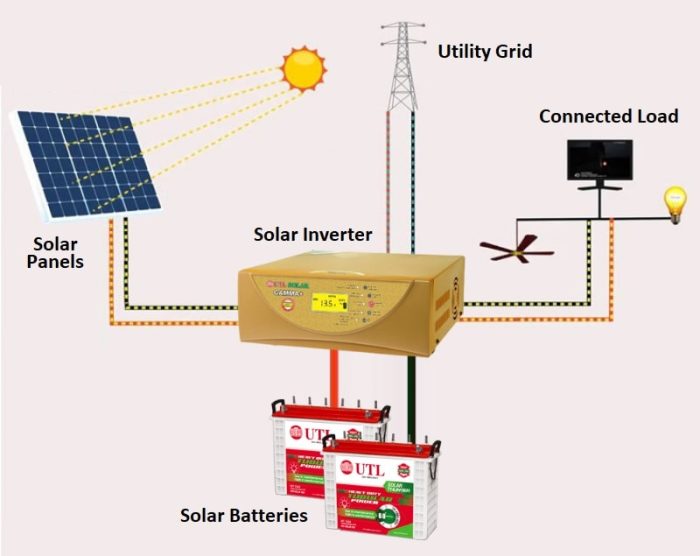
#3. 3 Types of Solar Inverter
Solar inverters are classified into three types: on-grid, off-grid, and hybrid inverters. All of these inverters can be further classified based on the input capacity that they accept, such as 12 volt DC, 24 volt DC, 48 volt DC, or even 96 volt DC. Without getting too technical, let’s take a closer look at the three main types of solar inverters.
On-Grid Solar Inverter
Off-Grid Solar Inverter
Hybrid Solar Inverter
On-Grid Solar Inverter
An on-grid inverter is also known as a grid-tie or grid-connected inverter, generally used with an on-grid solar system. This inverter automatically sends the excess electricity generated by the solar system into the utility grid via a bi-directional meter. The entire export/import process is known as net-metering.
On-grid inverters have the additional functionality of shutting down the solar system in case of a power outage. This is a safety feature known as Anti Islanding. This is done to prevent the line workers who are sent to fix the power grid.
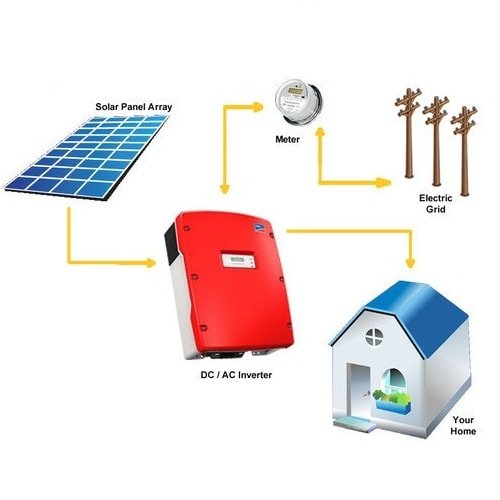
This system doesn’t have battery backup, so during a power cut, you will not have access to power. On-grid solar power inverters are used for home and commercial use in urban and industrial areas where electricity bills are high.
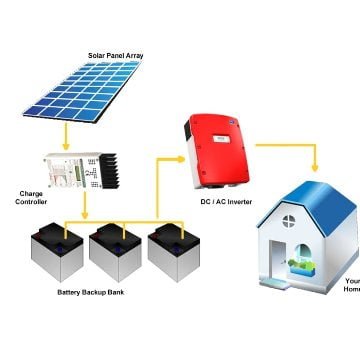
Off-Grid Solar Inverter
An off-grid solar power inverter, also known as a stand-alone inverter or solar battery inverter, is a device that is used in an off-grid solar system.
This inverter operates independently of the power grid and can’t feed electricity to the grid. It has no provision to tap into the grid electricity.
If a solar system is designed with an off-grid inverter, the panels are typically connected to a solar battery, which is then connected to an off-grid inverter.
In an off-grid solar system direct current (DC) generated by the solar panel is used to charge the solar battery. When there is a power cut, the inverter will draw stored energy from the solar battery, converting DC power from the battery to usable AC power for running electrical appliances.
Hybrid Solar Inverter
A hybrid inverter is a combination of on-grid and off-grid inverters. Under normal operating conditions it will supply power to your home, charge the solar battery and excess power will be fed into the grid.
In case of a power cut or the panels are not producing enough to meet the load, the unit will automatically switch over to battery supply and continue to operate independently from the electricity grid. This smart feature is very useful when the solar panels are not producing enough electricity and the batteries are getting drained.
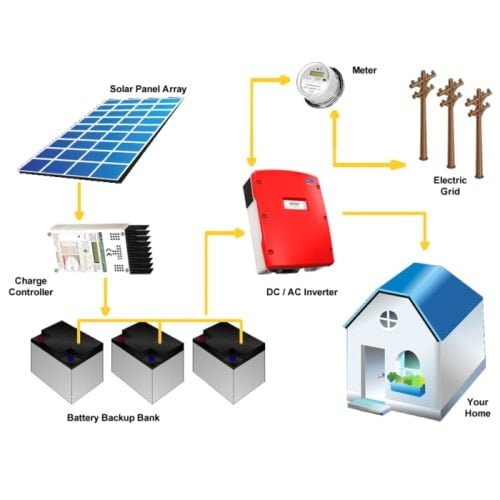
The advantage of using a hybrid inverter is that it can feed excess electricity to the grid and take advantage of net metering. These all-in-one modern inverters are highly versatile. A hybrid inverter system can be used in both high power cut areas or areas where there is rare or very less power cut.
#4. Price List of Solar Inverter
When it comes to buying a solar inverter, the price is the most important factor to consider. There are a lot of solar inverters in the market and their prices vary according to their type, capacity, and brand. That’s why we have brought you the price list of solar inverters so that you can have an idea of their prices.
On-Grid Solar Inverter Price List
On-grid inverters not only reduces our electricity bills but they are affordable too. We have provided best possible prices for 1kW to 10kW capacity below.
| On-Grid Inverter Model | Rating (kW) | Selling Price |
| 1kW On-Grid Inverter | 1kW – 1 Phase | Rs. 19,000 |
| 2kW On-Grid Inverter | 2kW – 1Phase | Rs. 25,000 |
| 3kW On-Grid Inverter | 3kW – 1Phase | Rs. 30,000 |
| 5kW On-Grid Inverter | 5kW – 1Phase | Rs. 45,000 |
| 6kW On-Grid Inverter | 6kW – 3Phase | Rs. 75,000 |
| 10kW On-Grid Inverter | 10kW – 3Phase | Rs. 90,000 |
- (Inclusive of all taxes) Prices can vary ± 10% to 12% depending on location, promotions and availability, and solar brand.
- Check our Online Solar Shop or Amazon Store for latest price and stock availability.
Off-Grid Solar Inverter Price List
| Off-Grid Inverter Model | Rating (kW) | Selling Price |
| 1kW Off-Grid Inverter | 1kW – 1Phase | Rs. 19,000 |
| 2kW Off-Grid Inverter | 2kW – 1Phase | Rs. 25,000 |
| 3kW Off-Grid Inverter | 3kW – 1Phase | Rs. 30,000 |
| 5kW Off-Grid Inverter | 5kW – 1Phase | Rs. 45,000 |
| 6kW Off-Grid Inverter | 6kW – 1Phase | Rs. 75,000 |
| 10kW Off-Grid Inverter | 10kW – 1Phase | Rs. 90,000 |
- (Inclusive of all taxes) Prices can vary ± 10% to 12% depending on location, promotions and availability, and solar brand.
- Check our Online Solar Shop or Amazon Store for latest price and stock availability.
Hybrid Solar Inverter Price List
| Hybrid Inverter Model | Rating (kW) | Selling Price |
| 3kW Hybrid Inverter | 3kW – 1Phase | Rs. 75,000 |
| 5kW Hybrid Inverter | 5kW – 1Phase | Rs. 78,500 |
| 6kW Hybrid Inverter | 6kW – 1Phase | Rs. 83,500 |
| 10kW Hybrid Inverter | 10kW – 1Phase | Rs. 1,78,500 |
| 10kW Hybrid Inverter | 10kW – 3Phase | Rs. 2,39,000 |
- (Inclusive of all taxes) Prices can vary ± 10% to 12% depending on location, promotions and availability, and solar brand.
- Check our Online Solar Shop or Amazon Store for latest price and stock availability.
#5. 2 Technologies of Solar Inverter
Solar inverters have a built-in solar charge controller. These solar charge controllers can be MPPT or PWM in tehnology. So let’s see the difference between MPPT and PWM inverters.
MPPT Solar Inverter
MPPT (maximum power point tracking) based inverters are latest technology inverters with up to 97% efficiency.
This technology allows the inverter to extract more power from the solar panels. This is done by keeping the panel’s output close to the maximum power point of the panels. Inverters with MPPT functionality are more expensive than the PWM inverter.

Buy this Product on Amazon: UTL Gamma Plus rMPPT Solar Hybrid Inverter 1000VA- 12Volt- 40Amp Charger
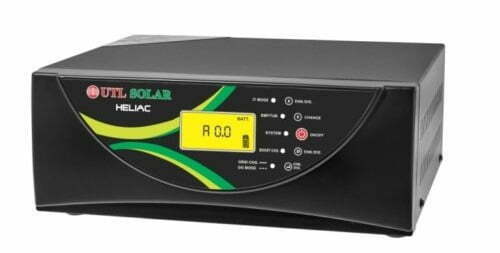
Buy this Product on Amazon: UTL Heliac-1200/50A, 1000VA/12V PWM Pure Sine Wave Solar Inverter
PWM Solar Inverter
PWM (pulse width modulation) technology is suitable for small size inverters. These inverters have a maximum output efficiency of around 70%.
It is a good low-cost solution for all home solar systems. PWM inverters tend not to work very efficiently if the solar panel is shaded.
#6. MPPT V/s PWM Solar Inverter
MPPT Inverter | PWM Inverter |
96% Efficient | 70% Efficient |
Suitable for higher capacity solar system | Suitable for smaller capacity solar system |
Latest technology | Time tested technology |
Expensive | Cheaper |
Can’t utilize up to 4% solar power | Can’t utilize up to 30% solar power |
#7. Features of Solar Inverter
Now we all know that a solar inverter is the most crucial component of a solar system. So we should also know about its features.
-
High-Efficiency
Solar inverters are much more efficient than ordinary inverters. The efficiency of these inverters can range from 96% to 97%. It depends on which technology and inverter brand you are getting installed.
-
Futuristic Technology
These inverter comes with MPPT and PWM technology. Both the technologies are time-tested and excellent. Now you have to decide which technology inverter is better for you according to your solar system.
-
Strong & Lightweight
The inverters are made of high-quality material which provides them with robustness. At the same time, they are also very lightweight so that there is no problem in carrying them. They may easily be moved from one location to another.
-
User Friendly LCD Display
You will get to see a user-friendly LCD display in almost all solar inverters. In this display, you can see the daily generation of the solar system, your electricity consumption as well as other solar calculations.
-
High Safety & Protection Level
The best thing about these inverters is that you will get to see all the necessary safety features in them. If we talk about these features, then you get many advanced features like anti-islanding, surge protection.
-
Zero Noise Level
These inverters are not only reduce carbon footprints but also help in reducing noise pollution. They do their work in a very smooth manner without any noise. It will continue to work in your house throughout the day and you will not even know.
#8. Solar Inverter V/s Normal Inverter
A solar inverter is simply an upgraded version of a standard inverter that is far more efficient than a standard inverter. One of its distinguishing features is that it can work as an ordinary inverter, but a simple inverter can never work as a solar inverter.
Let’s look at some other difference between solar power inverters and standard inverters.
Criteria | Solar Inverter | Normal Inverter |
Power Source | Use both solar & grid power | Use only grid power |
Working | Can works with or without battery | Works with battery only |
Cost | Little more expensive | Less expensive |
Suitable For | Both home and commercial appliances | Only for home appliances |
#9. Pros & Cons of Solar Inverter
- Advantages
- You will get free solar power
- No limitation of load (on-grid inverter)
- Export extra electricity to the grid
- Up to 70% subsidy on on-grid solar
- Works even without grid (off-grid/hybrid)
- No dependency on govt. electricity
- Ensures smooth power to the load
- Reduce your electricity bills up to ₹0
- Easy to install and maintain
- Reduce carbon footprint
- Disadvantages
- Little expensive compare to a normal inverter.
- Required battery during night/power outage.
Frequently Asked Question
It depends on your needs. Off-grid inverter is best to get power backups, on-grid solar inverter will reduce your electricity bills and hybrid inverter provides both the features.
The price of a solar inverter depends on its type, capacity and solar brand. However, the prices start from Rs.10,000 in India. It increases according to the capacity and type of inverter.
It converts DC electricity generated by solar panels into usable AC electricity.
A solar inverter can deal with solar power as well as grid power, while a normal inverter only utilizes grid power.
The estimated life of these inverters is more than 5 years.
You can contact us for the same. We have dedicated solar installation team for installation of solar power inverter & complete solar system.
The cost of a 5kW on-grid and off-grid inverter is Rs.45,000, and hybrid inverter is Rs.78,500.
Yes. An on-grid inverter and a hybrid inverter can work without a solar battery.
Yes, but only in on grid solar system.
An off-grid inverter converts DC electricity, generated by solar panels into useful AC electricity. After running connected load, it stores excess electricyt into the solar batteries.
Yes. You need to install a solar charge controller to converter your normal inverter into a solar inverter.
For buying any type and any capacity solar inverter, you can contact us.
